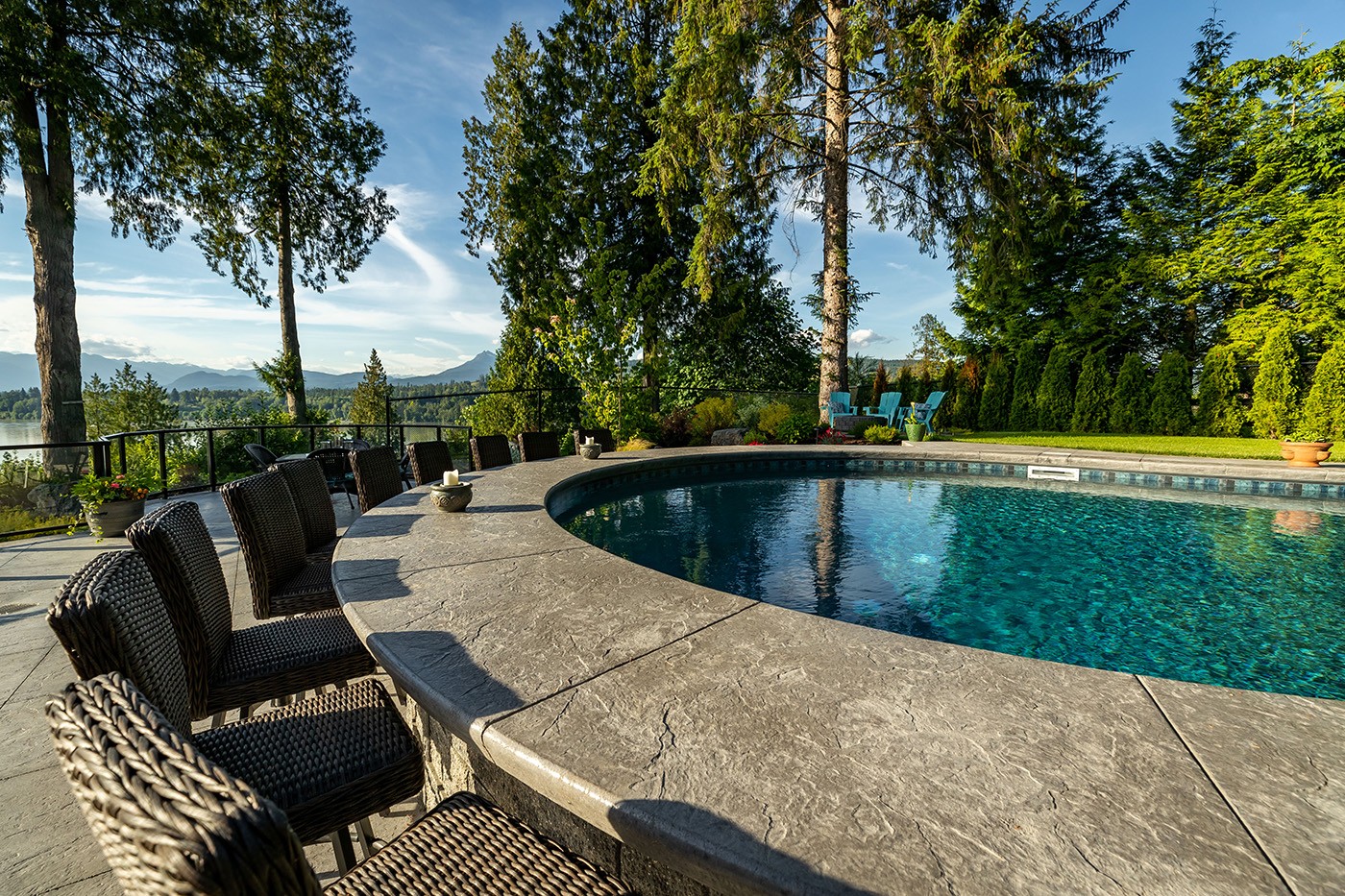
Choosing the Best Water Feature For Your Landscape
Bring the soothing sound of water to your backyard
Use these six tips to keep your lawn and gardens looking their best
The care you put into your lawn, gardens and hardscapes during the spring and summer months will determine the health and beauty of your landscape — nothing looks worse than a flower bed choked with weeds, buckled patio stones and a lawn that’s patchy and brown.
Before these issues crop up, remember that an ounce of prevention is worth a pound of cure — so the best way to protect your landscape investment is to maintain it with regular upkeep. Here are the six top tips we give to clients who have invested in a new landscape with us.
Our landscape designs include a variety of native plants that thrive naturally in the Lower Mainland — making it much easier to maintain them.
Get to know your plants (you can look them up on the PlantSnap smartphone app) and how to care for them. Most need little more than regular watering and feeding during the summer months and a nice, thick application of mulch to keep the weeds at bay.
And once your plants mature and fill in the weeds will have a harder time getting sunlight and nutrients, so you’ll have to weed less often. Just be sure to take care of the weeds that do emerge right away — before they have a chance to spread and become a major nuisance.
If you want your lawn and gardens to be lush, healthy and the envy of the neighbourhood, you need to include regular watering in your maintenance schedule.
The best time to water is early morning, before the heat of the day. This gives the roots more time to absorb the water and prevent the water from evaporating.
New plantings and fresh sod need to be watered daily until they’re established. After that an inch a week is all they need — overwatering can lead to shallow roots and unhealthy plants.
If you have more questions about watering, these tips from the Saving Water Partnership are really helpful.
The best time to mow your lawn is early morning (after the dew has dried) or late afternoon, avoiding the heat of the day.
Make sure your blade is sharp and set to cut between 2.5 and 3 inches, depending on the weather and type of grass you have.
The goal is to take no more than 1/3 off the top so you don’t stress out your lawn, so aim to mow at least once a week.
Your lawn needs to be fertilized every 6–8 weeks to replenish the nutrients in the soil, starting in early spring. So basically you have 4 applications — early spring, late spring, late summer and fall.
Regular fertilization gives you a thick and healthy lawn and discourages weeds by crowding them out.
Applying a nice, thick layer of mulch over your garden beds not only looks terrific, it makes caring for your garden a lot easier.
Mulching keeps the soil warm, helps your plants retain moisture (so less watering is needed) and is a natural weed deterrent. If a weed somehow does end up poking through the mulch, its roots are shallow and weak, making it easy to pull.
To cut down on the amount of pruning you need to do, it’s best to incorporate mass plantings into your garden design. By planting groups of 5–7 — or even as many as 15 — the plants tend to grow into each other so you’re less likely to notice when the garden becomes overgrown.
But to keep your trees and shrubs healthy and looking their best, you do need to prune your trees and shrubs at least once a year.
Pruning should be done in late fall or early winter when the tree is dormant — pruning in the spring when the sap is flowing will rob your tree or shrub of essential nutrients.
Flowering shrubs should be pruned right after the blossoms fade — if you wait too long, you risk nipping off next year’s blooms!
Whether you’re an avid gardener or want something a bit more low-maintenance, a landscape by Vandenberg is designed to fit your lifestyle no matter what. (It’s built into our process.)
While we don’t offer maintenance services, our sister company Vandenberg Maintenance does and we will happily refer them to you!

Bring the soothing sound of water to your backyard
A deep-dive into the four main types of backyard pools.
Eco-friendly, customizable “swimming ponds” offer crystal clear water without the chemicals
Tips and ideas to create a great poolside experience
Small enhancements that make a big impact
It’s possible to have the best of both worlds.








